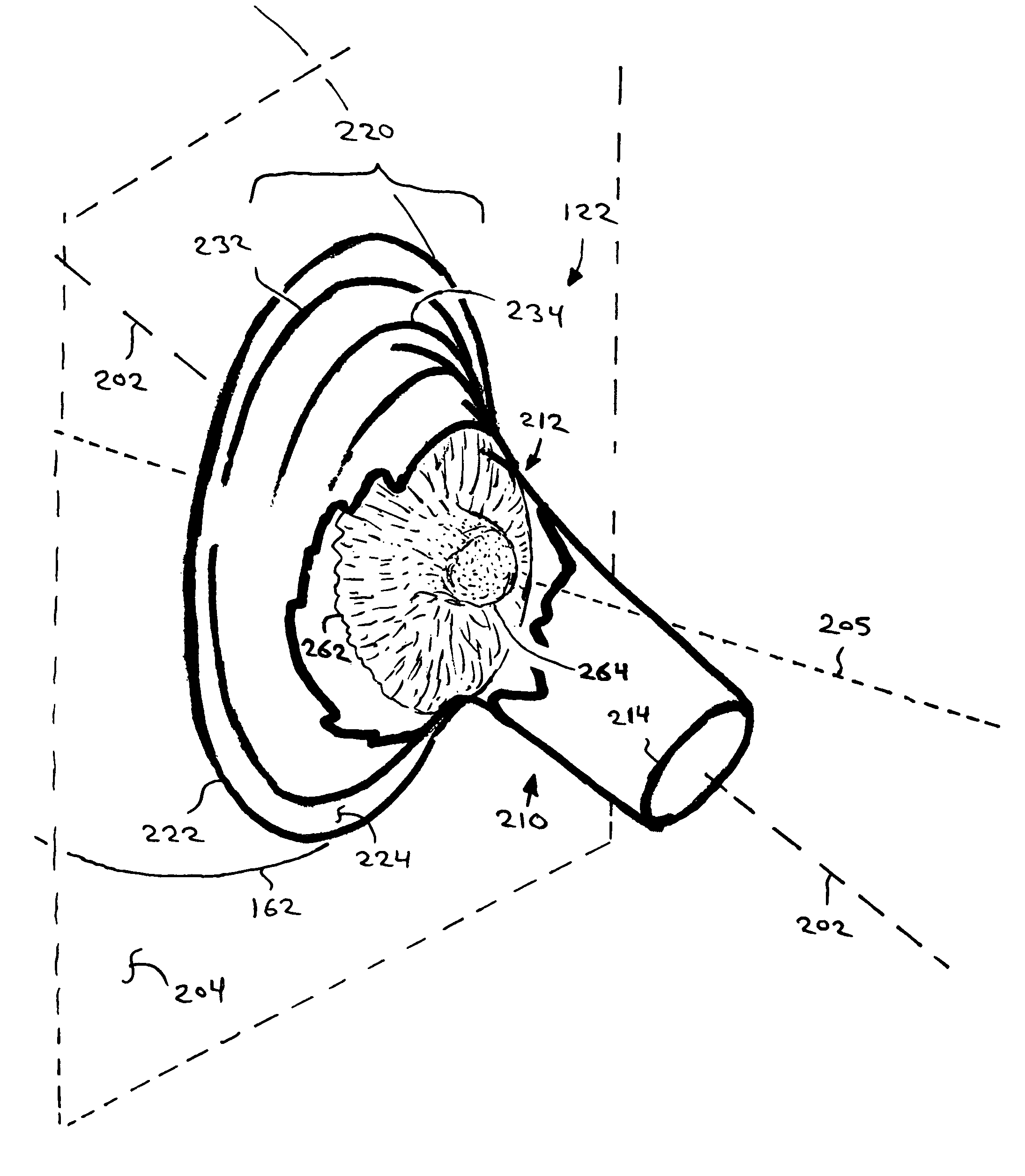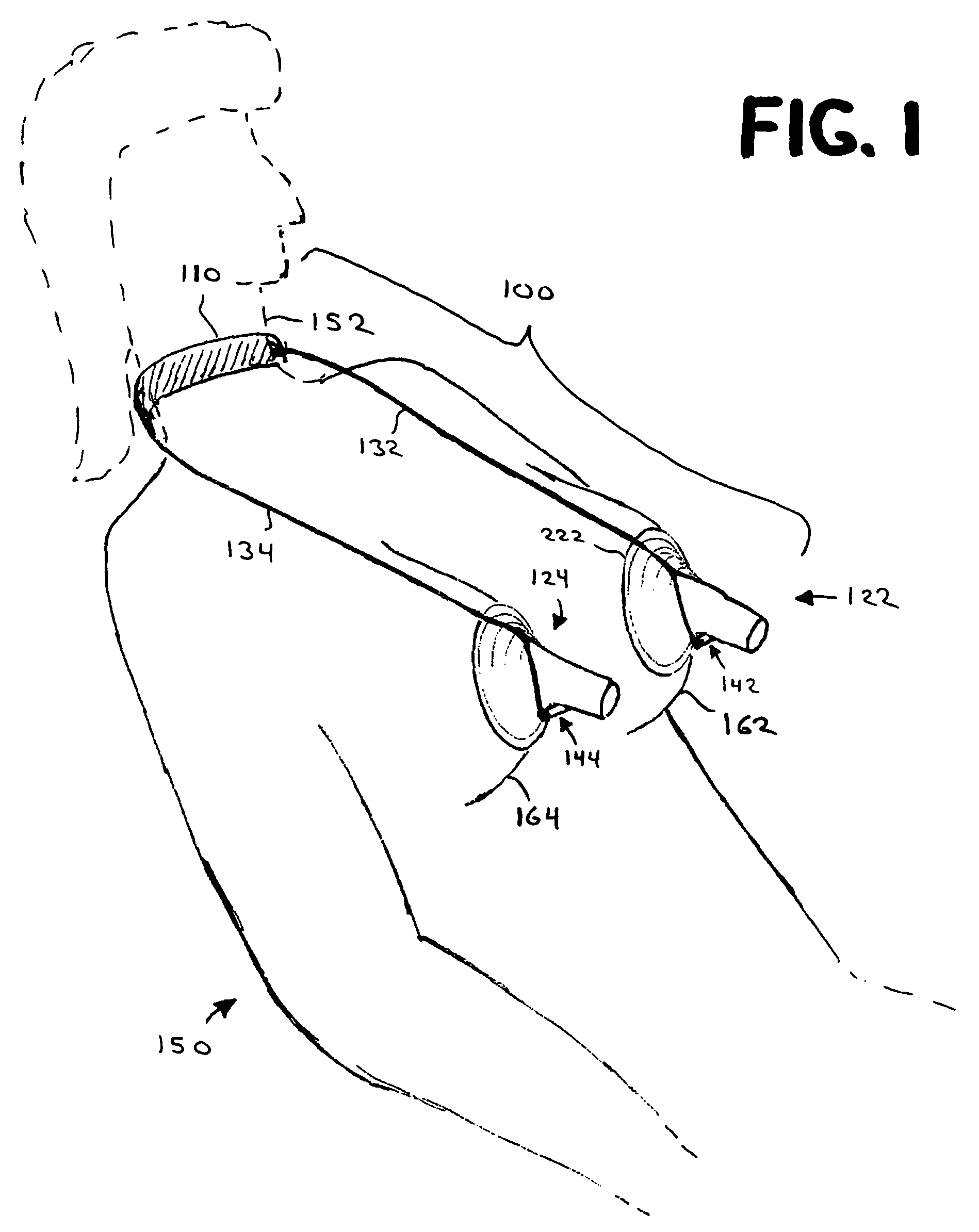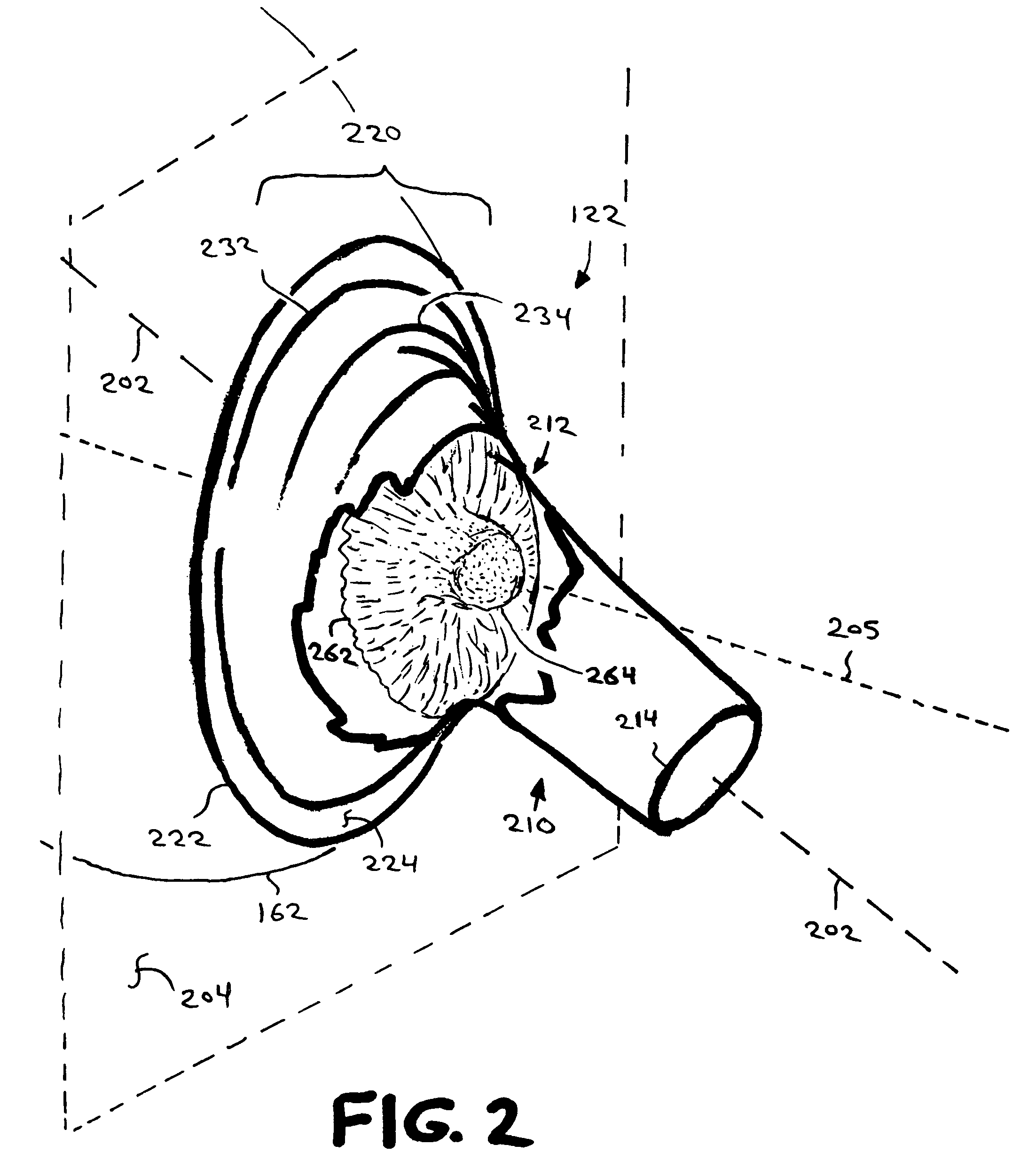Reclining breast pumping system
a breast pumping and reclining technology, applied in the direction of milk pump, suction device, medical device, etc., can solve the problems of increasing the pain of the ring area of the nursing woman, affecting the normal operation of the breast shield, and unable to meet the needs of nursing women, so as to facilitate the gravity-induced flow of milk and avoid pooling
- Summary
- Abstract
- Description
- Claims
- Application Information
AI Technical Summary
Benefits of technology
Problems solved by technology
Method used
Image
Examples
Embodiment Construction
[0025]A reclining breast pumping system according to various aspects of the present invention is illustrated in the figures. As may be better understood with reference to FIG. 1, for example, one such system 100 includes: a strap 110 comprised of strap material that suspends from the neck 152 of a nursing woman, wearer 150; a pair of angled breast shields 122, 124; and a pair of flexible cords 132, 134 that support breast shields 122, 124 at breasts 162, 164, respectively, of wearer 150. Cords 132, 134 connect opposite ends of strap 110 to trapeze support structures 142, 144 to support breast shield 122, 124, respectively.
[0026]FIG. 1 illustrates wearer 150 in a partially reclining position. There is a structural benefit to the reclining position, in addition to its increased comfort for wearer 150, because it permits the weight of breast shields 142, 144, and whatever conventional apparatus (not shown) is employed for milk collection and suction, to help keep breast shields 142, 14...
PUM
 Login to View More
Login to View More Abstract
Description
Claims
Application Information
 Login to View More
Login to View More - R&D
- Intellectual Property
- Life Sciences
- Materials
- Tech Scout
- Unparalleled Data Quality
- Higher Quality Content
- 60% Fewer Hallucinations
Browse by: Latest US Patents, China's latest patents, Technical Efficacy Thesaurus, Application Domain, Technology Topic, Popular Technical Reports.
© 2025 PatSnap. All rights reserved.Legal|Privacy policy|Modern Slavery Act Transparency Statement|Sitemap|About US| Contact US: help@patsnap.com



